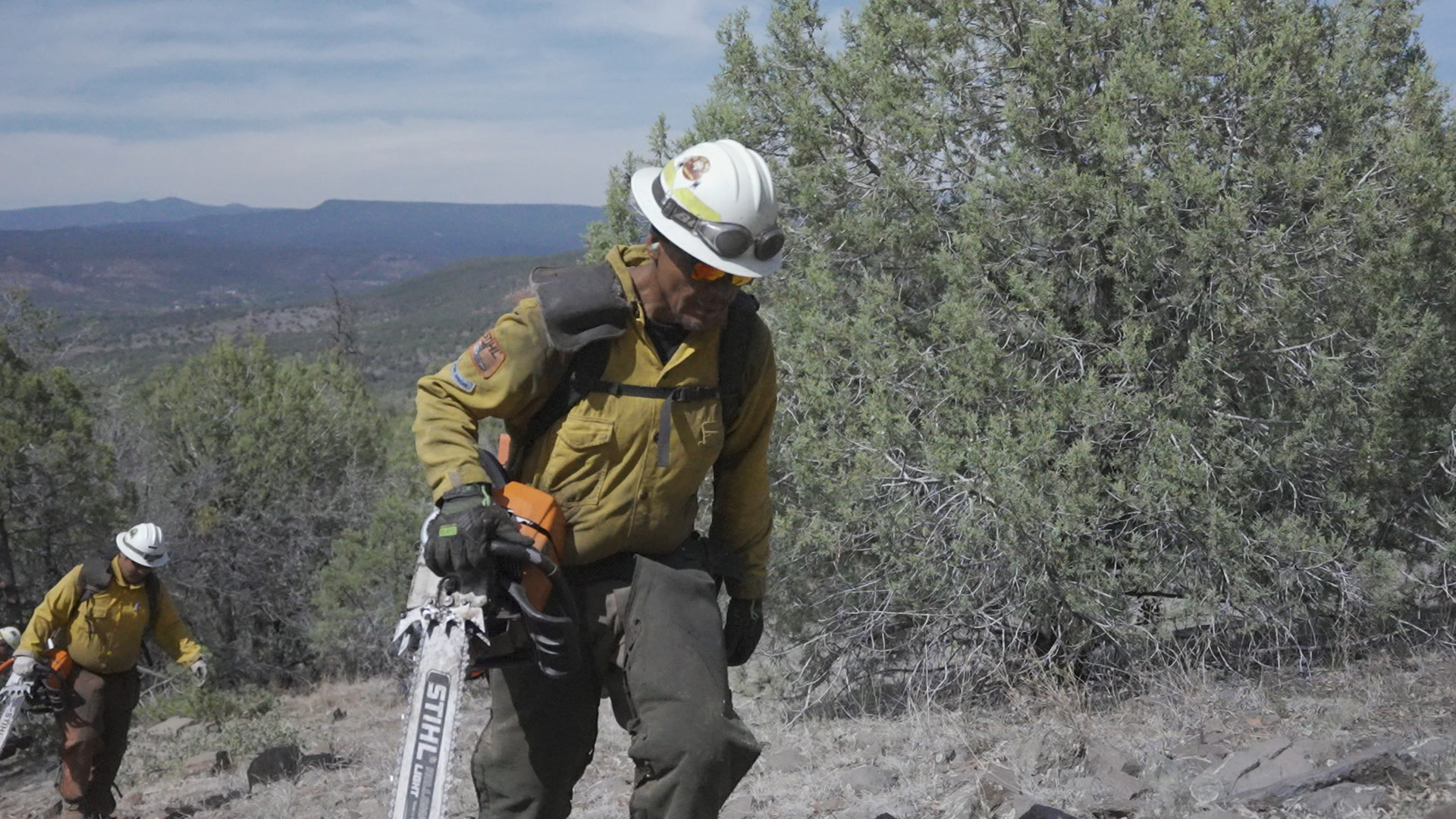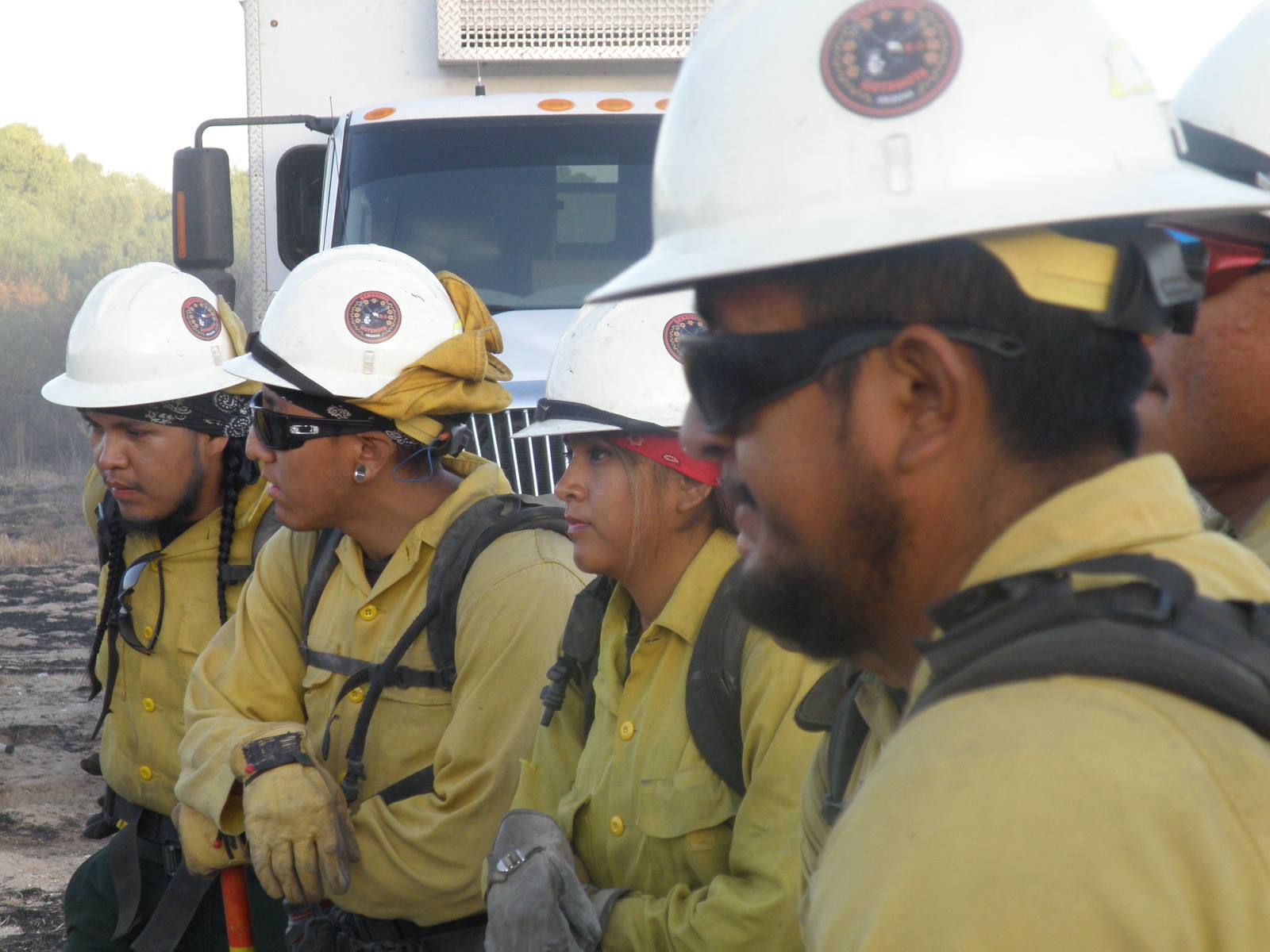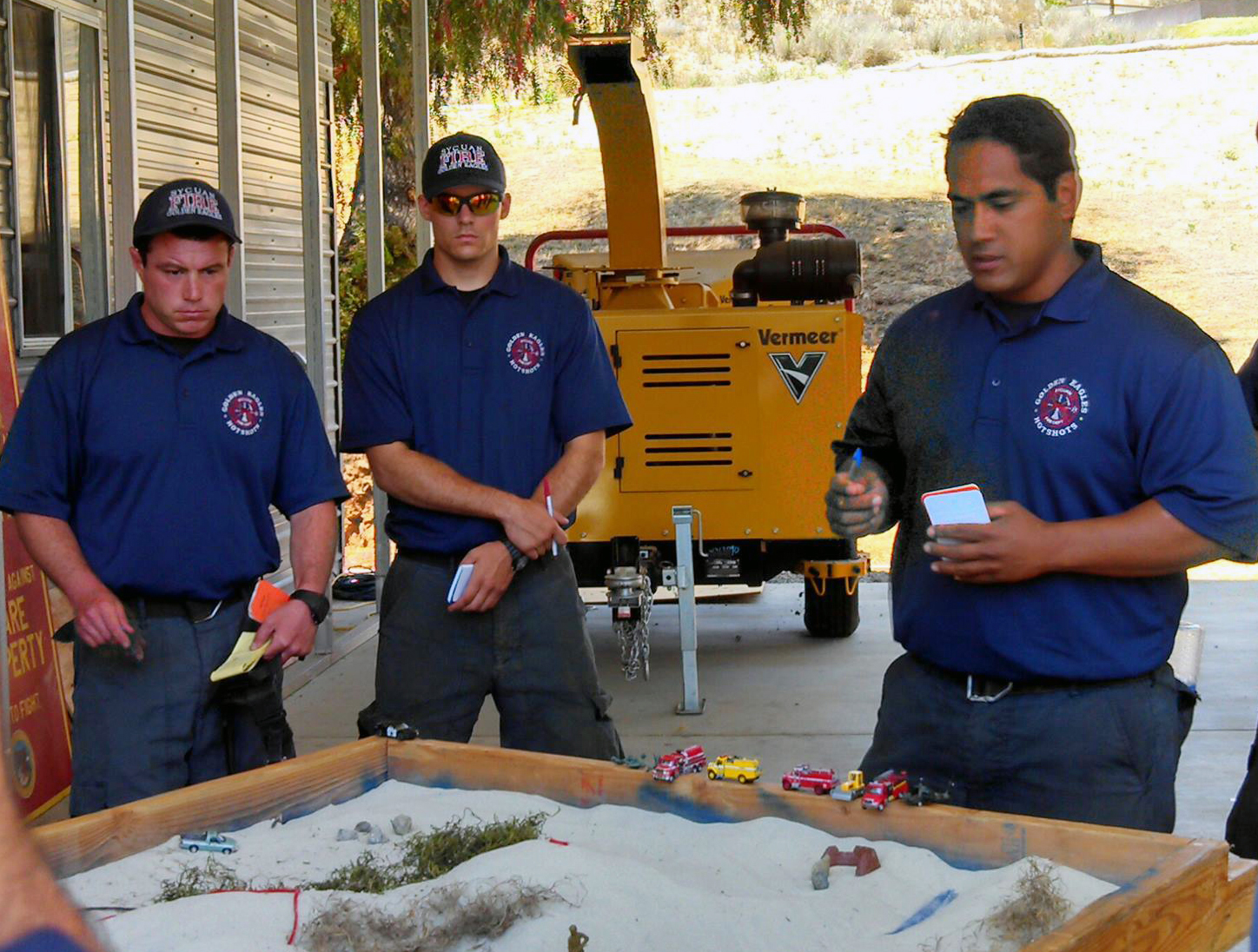Our Mission
The mission of the BIA Training program is to provide wildland fire training courses and education opportunities to technicians and professionals who occupy fire management positions in Bureau and Tribal programs.
To accomplish this, the training specialists analyzes the needs for training in Indian Country then develops, coordinates and implements wildland fire training programs to meet those needs.
Training and Certification
The Incident Qualifications Card (Red Card) certification is necessary to become qualified for wildland fire operations. Obtaining a Red Card involves a combination of classroom training, a field exercise, and in some cases, physical fitness testing. Wildland fire operations offer a variety of positions and necessitate a diverse skill set. Once complete, the Red Card certification must be renewed every year by taking the Annual Fireline Safety Refresher course (RT-130).
Classroom Training
All basic firefighters must complete 32 hours of classroom training. This training includes Introduction to Incident Command Systems (ICS-100), Human Factors in the Wildland Fire Service (L-180), Firefighter Training (S-130), and Introduction to Wildland Fire Behavior (S-190).
Bureau of Indian Affairs and Tribal fire management programs subscribe to the training requirements developed by the National Wildfire Coordinating Group (NWCG). These requirements are published in the NWCG Standards for Wildland Fire Position Qualifications, PMS 310-1.
Field Exercise
A one-day field exercise is part of every basic firefighter's training. This field exercise, which follows the four-day classroom training, allows new firefighters to apply the classroom training and exposes them to a controlled scenario designed to give them real experience to help them prepare for their first wildfire assignment. Note: Medical screening and approval must be complete prior to any physical fitness testing.
Fitness Testing
All firefighters and support personnel must complete fitness testing annually, prior to working in the wildland fire environment. There are three different physical fitness testing levels that are determined based upon their position, Arduous, Moderate and Light. The Bureau of Indian Affairs works with the Department of the Interior's Medical Standards Program to provide the medical screening and approval for wildland firefighters.
- Arduous: Called the “pack test” – trainee must walk 3 miles carrying 45 lbs. of weight in 45 minutes; required for all basic and advanced wildland firefighters. Learn more about the duties of an arduous firefighter here.
- Moderate: Called the “field test” – trainee must walk 2 miles carrying 25 lbs. of weight in 30 minutes; required for positions like Safety Officer, Prescribed Fire Burn Boss Type 2, and Structure Protection Specialist. Learn more about the field test here.
- Light: Called the “walk test” – trainee must walk 1 mile with no weight in 16 minutes; required for positions like Incident Communications Technician, Prescribed Fire Burn Boss Type 1, and Staging Area Manager. Learn more about the walk test here.
Annual Fireline Refreshers
Once a firefighter completes their basic training, they must maintain their training by taking the Annual Fireline Safety Refresher Training (RT-130). This must be done every year to maintain currency. Additionally, while not every position requires a fitness test, those arduous, moderate and light positions that do must also complete their annual fitness tests, typically given during the Annual Fireline Refresher.
The BIA requires 4 hours minimum for Refresher training each year. The Wildland Fire Safety Training Annual Refresher (WFSTAR) is a year-round program that provides training for wildland firefighters to maintain currency. WFSTAR is also a source to stay updated with relevant fire and safety topics.
Developing Qualifications
To develop qualifications, firefighters must take required training produced by the National Wildfire Coordinating Group (link is external) (NWCG), and complete Position Task Books. NWCG courses are offered nationally. Some common locations that host annual training include:
- National Wildland Fire Training
- NWCG Online Training Courses
- Wildland Fire Leadership Development Program
Position Task Books
For every certification a firefighter earns, there is a Position Task book (PTBs) to teach them the skills necessary to perform that skillset. These PTBs are issued by a unit's training officer. When the PTB is complete, and the person is nominated for certification, the training officer will certify the PTB and issue the new certification. For a complete listing of PTBs, visit NWCG Task books.
Red Cards and IQCS
After firefighters and fire managers complete training courses, gain qualifications, and perform on wildland fires (both wild and prescribed), training and experience records are stored in what is known as the Incident Qualifications and Certification System (IQCS). IQCS is the system that produces firefighter “Red Cards,” a pocket-sized document updated annually by a unit's training officer that identifies a person's fitness and fireline qualifications.
Each year, firefighters are responsible for submitting their training and fireline experience records to their training officer. They do this by completing the Incident Qualifications and Certification System Responder Update Sheet and submitting it to their training officer.
https://iqcsweb.nwcg.gov/sites/default/files/2017-10/IQCS_Responder_Update.pdf
Additional Training Resources
- Wildland Fire Safety Training Annual Refresher (WFSTAR)
- Interagency Aviation Training
- Interagency Fire Program Management
- Prescribed Fire Training Center
- National Advanced Fire & Resource Institute













